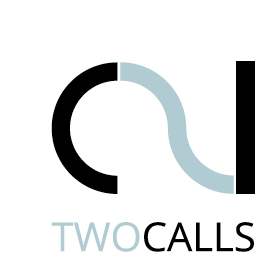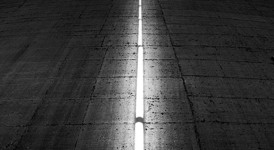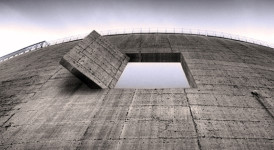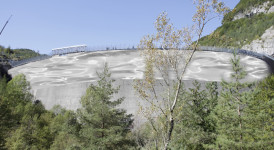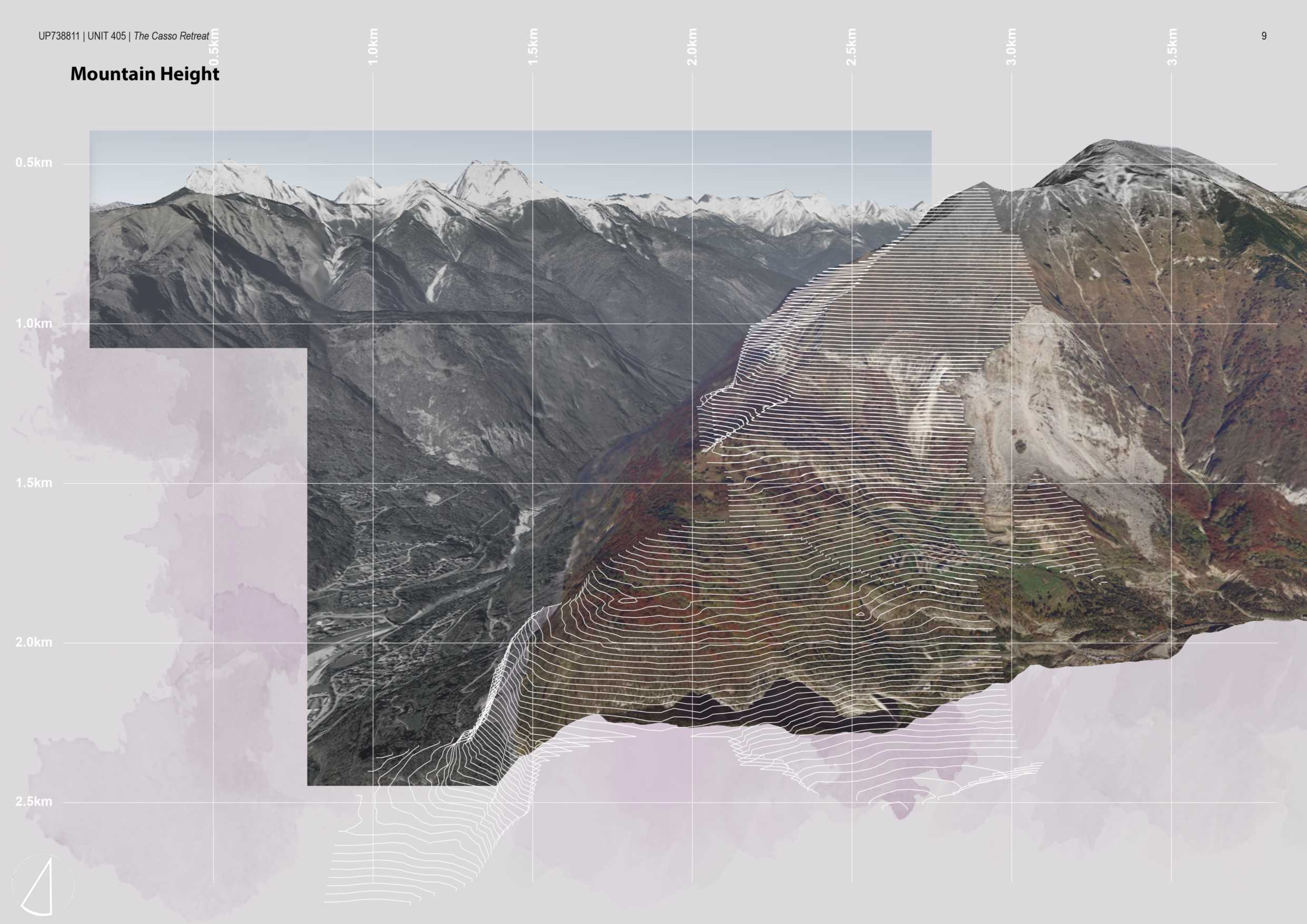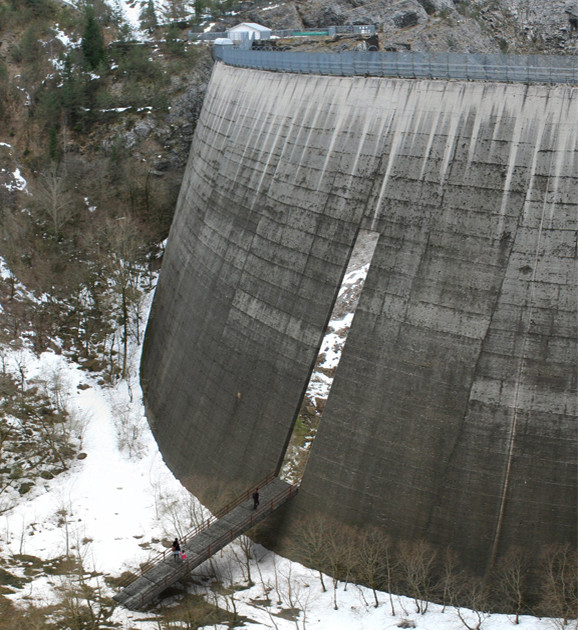
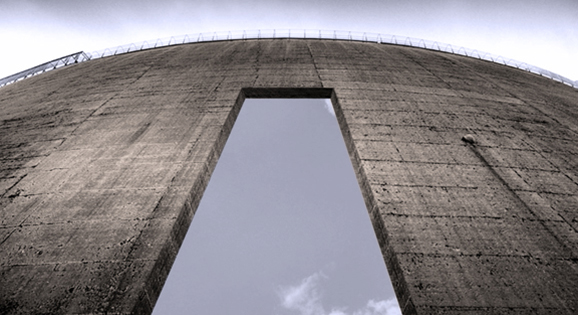
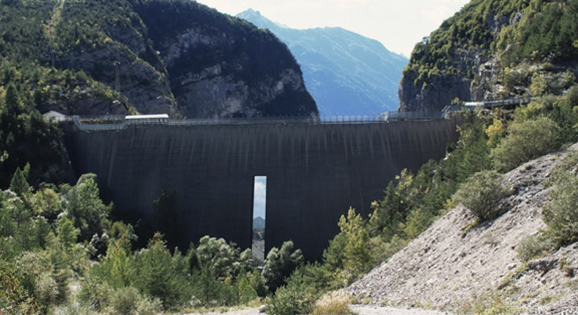
The Vajont Dam will always be a silent witness, it’s however symbol of a catastrophe, symbol of the insane exploitation of the nature. After all we can propose to accept it, to insert it in the natural space and to make it more than a simple barrier. It can be a space of reflection.
An opening, wich reveals the landscape (img.1). This landscape is not behind or in front of the dam, is a new space, created and imagined inside the wall, inside us, below a line that is imaginary too, in place of the water. The wall moves and opens itself to the viewer, it’s a door. The mirror behind the door is symbolically a hole that crosses this untouchable wall. From the top of the dam it’s possible to see a part of the concrete wall coming out from inside the dam. At the beginning of the gangway and also from the path the mirror shows the sky (img.2). From the sides around the dam, depending on the position, there are different perspectives of the landscape reflected (img.3).
The piece of wall is made of armed cement, and it’s fixed to the dam’s surface. The mirror is also fixed and slightly inward, if possible. Therefore it’s necessary to create a thickness inward into the wall to install the mirror, probably it will be usefull to plane the surface at least 6 cm in depth.
The gangway-door (2m x 20m) is set at the bottom of the dam (about 10m from the ground), it has got parapets and leads the spectator in front of the huge mirror (img.4-5). The mirror (2m x 30m) climbs vertically along the wall and stops just in correspondence of the line. For safety reasons, the level of the gangway and the mirror, can be lowered.
If it wouldn’t be possible to realize a door, we propose another variation of the same project: the window (img.6-7). This option offers the spectator a discovering of the sculptural object from afar (wall 2,3m x 1m – mirror 2,3m x 2,3m).
–
La diga del Vajont sarà sempre e comunque un testimone silenzioso, é simbolo di una catastrofe, simbolo dello sfruttamento folle della natura. Ciò che possiamo fare é accettarla, inserirla nello spazio naturale e renderla altro da una semplice barriera.
Essa può diventare uno spazio di riflessione.
Un’apertura rivela il paesaggio (img.1). Questo paesaggio non é nè dietro nè davanti alla diga, é uno spazio nuovo, creato e immaginato dentro il muro, dentro di noi, al di sotto di una linea anch’essa immaginaria, al posto dell’acqua. La parete si muove e si apre allo spettatore, é una porta che dà su un’immagine. Lo specchio dietro la porta é simbolicamente un’apertura, un buco che attraversa questo muro intoccabile.
Dall’alto si può vedere solo la parete di cemento, come una parte di diga che esca da dentro il muro. Dal basso, avvicinandosi alla parete, si scorge il cielo al di là del muro (dentro lo specchio; img.2). Dai lati attorno alla diga, in base alla propria posizione, si riflettono gli scorci di paesaggio (img.3).
La porzione di muro é di cemento armato, ed é fissata alla parete. Anche gli specchi sono fissati e leggermente rientranti, se possibile. È necessario quindi creare uno spessore rientrante nella parete per l’installazione dello specchio, possibilmente piallando la superficie e scavando almeno fino 6 cm di spessore.
La passerella (2m x 20m), che parte dalla base dell’apertura (a circa 10m da terra) é posta davanti al sentiero in fondo alla diga (img.4-5). Essa é dotata di parapetti e conduce lo spettatore davanti al grande specchio. Lo specchio (2m x 30m) sale verticalmente lungo la parete e si ferma alla linea. Per ragioni di sicurezza il livello della passerella e dello specchio possono essere abbassati.
Nel caso la porta non fosse realizzabile, proponiamo una variazione dello stesso progetto: la finestra (img.6-7), dove lo spettatore scopre l’oggetto scultoreo da lontano (porzione di muro 2,3m x 1m – specchio 2,3m x 2,3m).
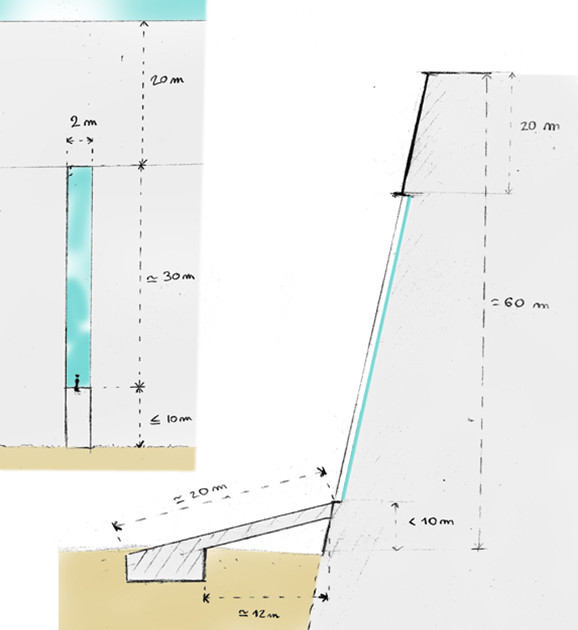
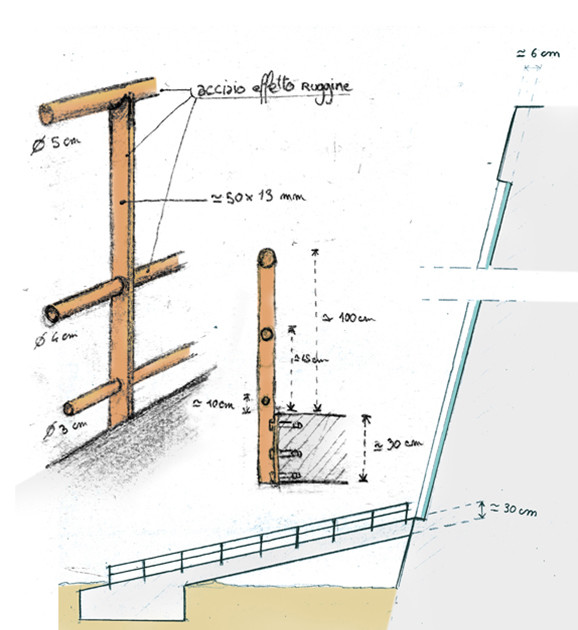
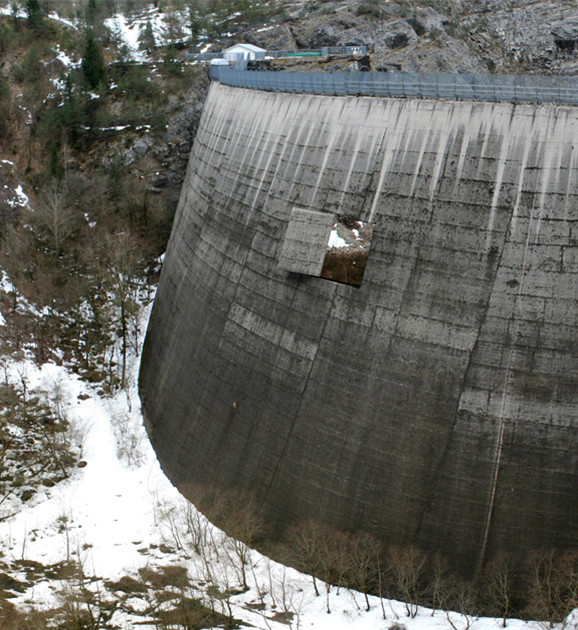

 marsiglia
marsiglia
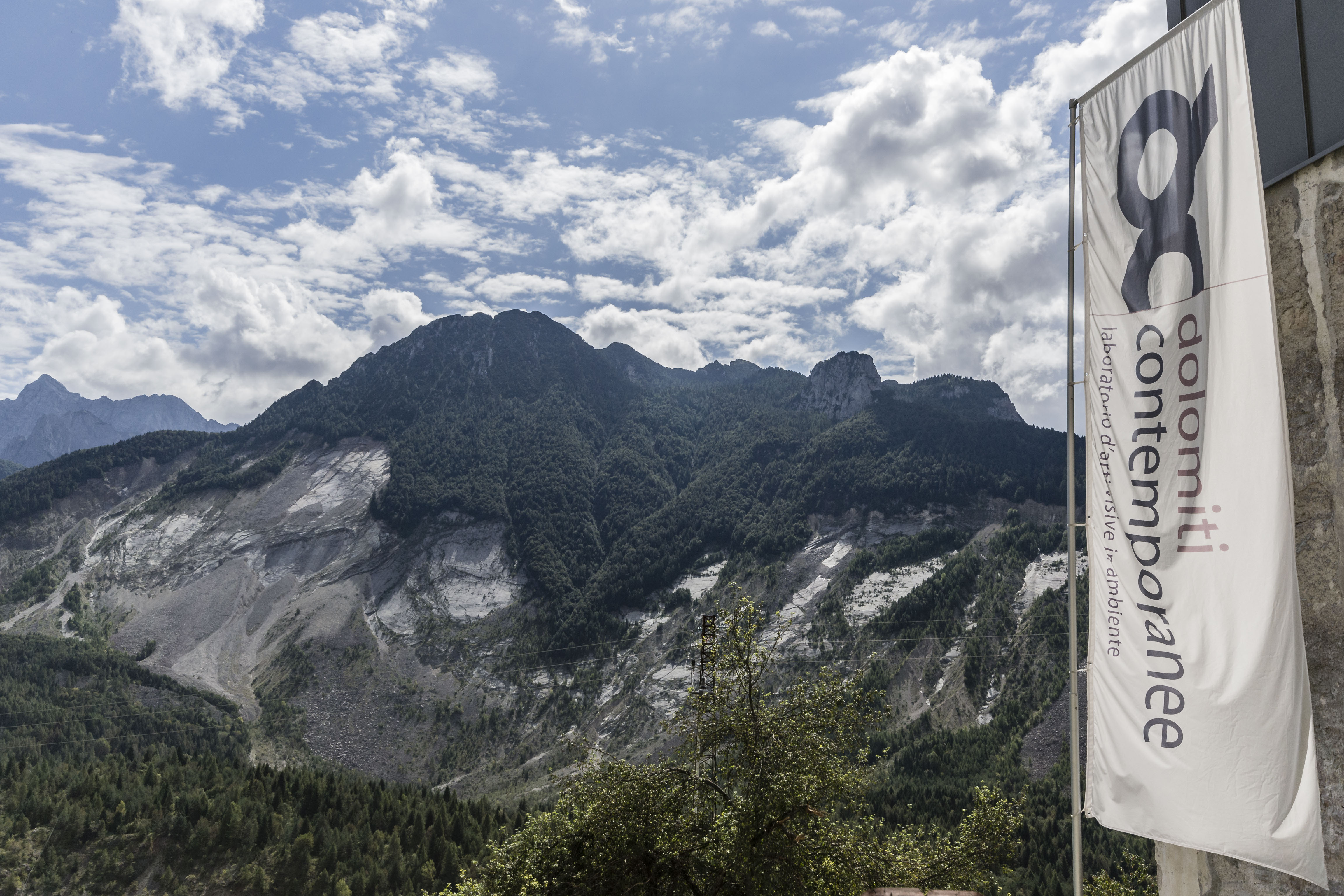
Tuesday, June 15th 2021, 2 – 4 PM, webinar panel:
two calls for vajont: fase _restart.
Vajont: [...]
